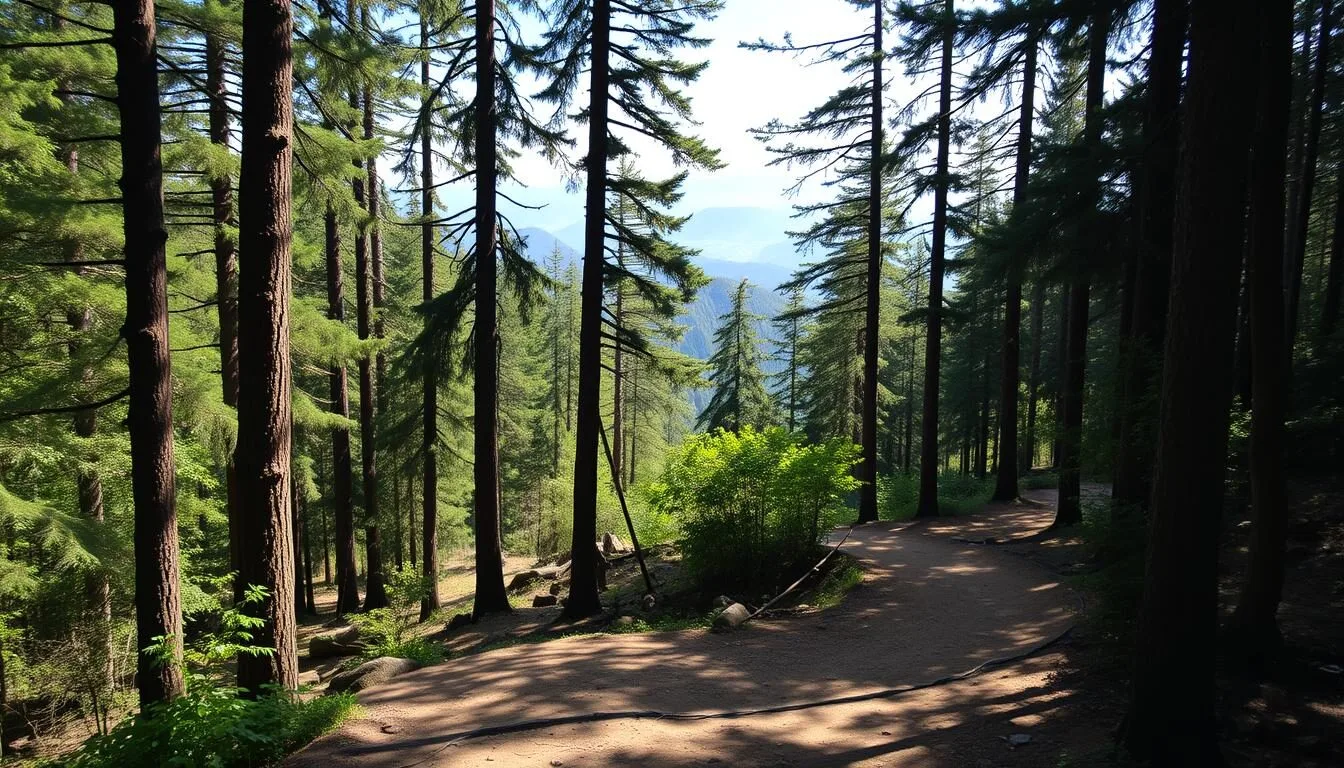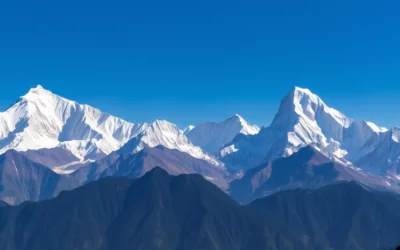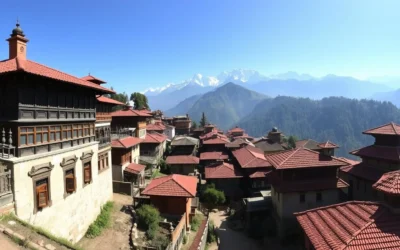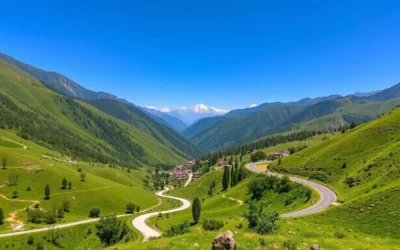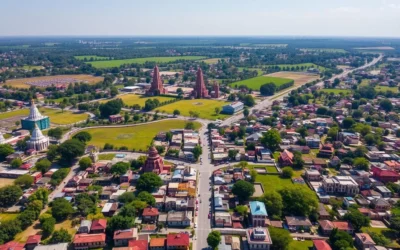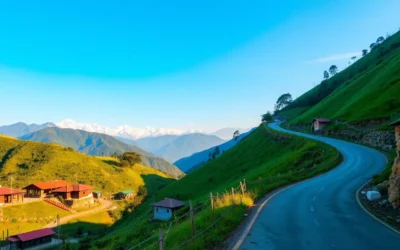✓ Accommodations✓ Flights✓ Rental Cars
Nestled just north of Kathmandu, a pristine wilderness awaits your arrival. As a gateway to Nepal’s most enchanting destinations, this national park offers a unique blend of spiritual experiences, breathtaking natural beauty, and cultural richness.
Are you ready to escape the city life and immerse yourself in nature? With numerous trails catering to different fitness levels, you can hike to the Shivapuri Peak or explore cultural sites like Nagi Gompa Monastery. The park’s importance as a water source for Kathmandu and its rich biodiversity make it an ideal destination for various types of travelers.
Whether you’re planning a day hike or a multi-day trek, this comprehensive guide will walk you through the best experiences that Shivapuri Nagarjun National Park has to offer.
Discovering Shivapuri Nagarjun National Park
As you venture into Shivapuri Nagarjun National Park, you’ll uncover the rich natural heritage that makes it a must-visit destination. The park is a haven for nature lovers and those seeking to escape the hustle and bustle of city life.

Location and Geography
Shivapuri Nagarjun National Park is located just north of Kathmandu, Nepal’s capital city. The park spans over 159 square kilometers, featuring a diverse range of geographical features, including lush forests, grasslands, and rugged mountain terrain.
History and Conservation
The park has a rich history, having been a former hunting ground for the Nepalese royalty. It was declared a national park in 2002, with the aim of conserving its natural resources and protecting its biodiversity. Conservation efforts have been ongoing to preserve the park’s natural beauty and ensure the sustainability of its ecosystems.
Importance as a Water Source
The park is significant as one of the primary water sources for the Bagmati River, which is vital to both Kathmandu’s water supply and Hindu religious practices. You can visit the natural water spouts at Baghdwar within the park, which form the headwaters of the Bagmati River. The park’s forests play a crucial role in maintaining water quality and regulating the flow of water to the valley below.
| Key Features | Description |
|---|---|
| Location | North of Kathmandu, Nepal |
| Area | 159 square kilometers |
| Significance | Primary water source for Bagmati River |
Planning Your Visit to Shivapuri Nagarjun National Park
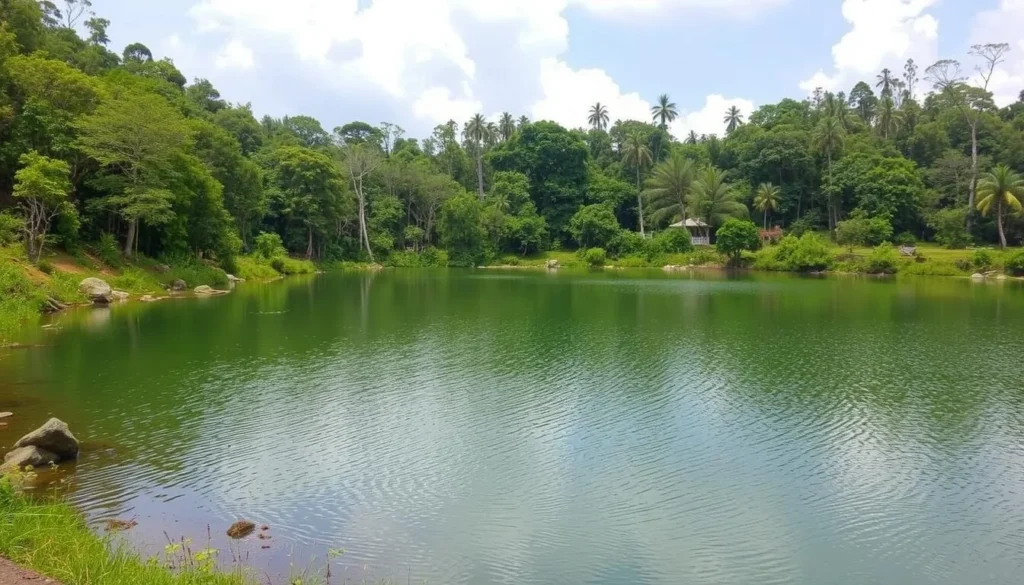
As you prepare to visit Shivapuri Nagarjun National Park, understanding the best times to go and how to get there can enhance your overall experience. The park offers a unique blend of natural beauty and cultural significance, making it a must-visit destination in Nepal.
Best Time to Visit
The best time to visit Shivapuri Nagarjun National Park is during the spring (March to May) and autumn (September to November) seasons. These periods offer mild temperatures and clear skies, ideal for hiking and exploring the park’s scenic trails. The spring season brings blooming flowers, while autumn provides a comfortable climate for trekking.
How to Get There
Shivapuri Nagarjun National Park is located near Kathmandu, making it easily accessible by road. You can hire a taxi or drive to the park’s entrance. The journey takes approximately an hour from Kathmandu city center. Alternatively, you can join a guided tour that includes transportation.
Entrance Fees and Permits
To enter the park, you’ll need to purchase an entrance permit at the main gate. The entrance fee for foreign visitors is 1,000 Nepali Rupees (approximately $8-9 USD), while SAARC country nationals pay 600 Rupees, and Nepali citizens pay 100 Rupees. Be sure to bring Nepali Rupees as foreign currency is not accepted at the entrance gate. Your permit can be checked at various points throughout the park, so keep it accessible during your visit.
Visitors should note that permits can also be obtained at Chisapani if you’re coming from the Langtang region. It’s essential to have your permit readily available to avoid any inconvenience during your visit.
Guide Requirements and Options
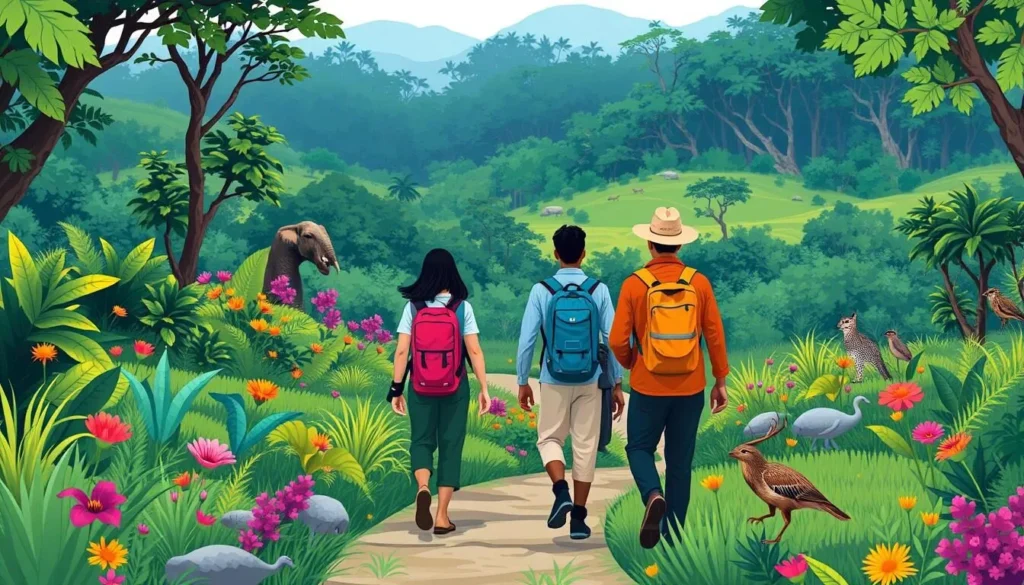
To navigate the trails of Shivapuri Nagarjun National Park effectively, hiring a guide is not just recommended, it’s mandatory. This ensures not only your safety but also enhances your trekking experience with valuable insights into the park’s history, flora, and fauna.
Mandatory Guide Rules
The park authorities have made it compulsory to hire a guide for all hiking and trekking activities within Shivapuri Nagarjun National Park. This rule is in place to ensure visitor safety and to protect the park’s natural resources.
Guide Fees and Services
The fees for hiring a guide vary depending on your destination within the park. You can expect to pay 1,000 rupees to Nagi Gompa, 1,500 rupees to Bhisnu Dwar, 2,000 rupees to Bagdwar or Shivapuri Peak, and 3,000 rupees to Chisapani. It’s crucial to note that most fees, except for the Chisapani route, are not for a full day, and there may be time limits imposed.
When you hire a guide, you’re not just getting a navigator; you’re gaining a knowledgeable companion who can enrich your tour with stories and facts about the park’s cultural and natural significance.
Hiking to Shivapuri Peak
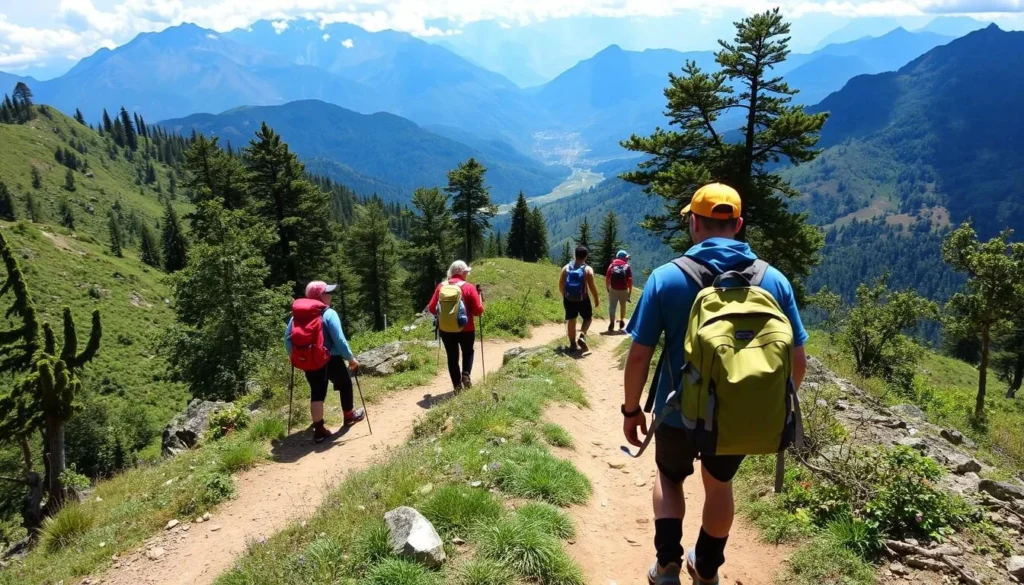
Hiking to Shivapuri Peak is an exhilarating experience that offers a unique blend of natural beauty and cultural significance. As you ascend, the lush green forest envelops you, providing a refreshing microclimate even on warmer days.
Trail Description and Difficulty
The Shivapuri Peak hiking trail is characterized by its dense canopy and the variety of flora and fauna it harbors. The trail is moderately difficult, making it accessible to hikers with a reasonable level of fitness. Along the way, you’ll encounter several shrines and religious sites that underscore the cultural importance of this area.
Distance and Elevation
The hiking trail to Shivapuri Peak is approximately 9-10 kilometers long, with an elevation gain that takes you from about 1,400 meters to 2,732 meters at the peak. This ascent offers a rewarding challenge with breathtaking views.
What to Expect Along the Way
As you hike to Shivapuri Peak, you’ll be immersed in a lush green forest for much of your journey. The dense canopy provides a cool respite from the outside heat. You’ll also come across various shrines and religious sites, highlighting the area’s cultural significance. At Baghdwar, you can visit the natural water spouts that form one of the sources of the sacred Bagmati River. While the mountain views from Shivapuri Peak might be limited, you’ll enjoy beautiful forest views and glimpses of the Kathmandu Valley through the trees. Keep an eye out for wildlife, including monkeys, various bird species, and potentially other small mammals.
Throughout your hike, the natural beauty and wildlife of the area will captivate you. The experience is not just about reaching the peak but also about enjoying the journey, with its rich biodiversity and cultural landmarks.
Exploring Nagi Gompa Monastery
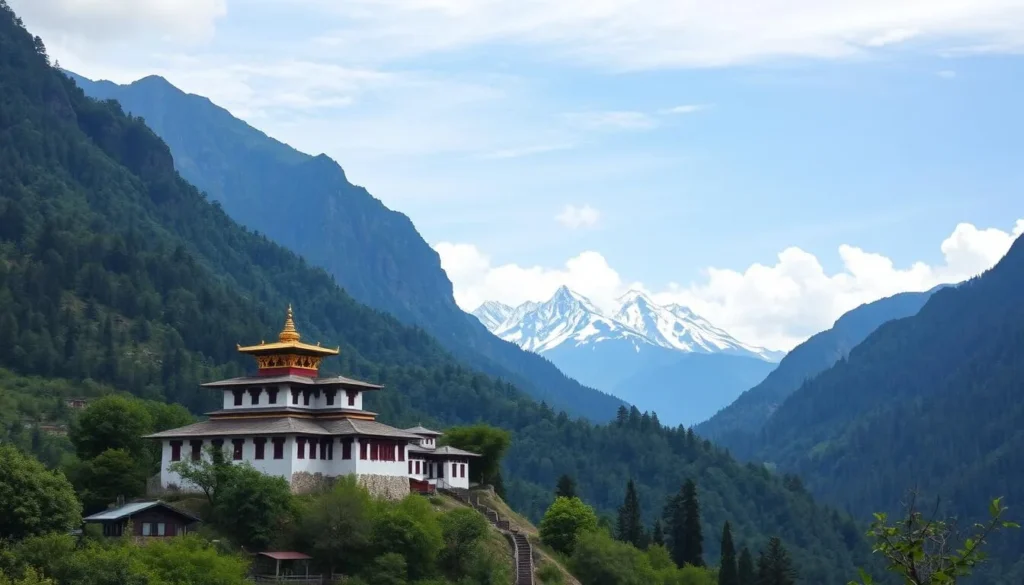
Nestled in the heart of the Himalayas, Nagi Gompa Monastery offers a serene escape and a chance to connect with Nepal’s rich Buddhist heritage. This sacred site is a must-visit destination within Shivapuri Nagarjun National Park, providing a unique cultural experience.
History and Significance
Nagi Gompa Monastery, also known as Nagi Monastery, holds significant importance in Nepalese Buddhism. It is a monastery where nuns practice and study Buddhism, making it a unique site for cultural and spiritual exploration.
Visitor Etiquette
When visiting Nagi Gompa Monastery, it’s essential to respect the local customs and traditions. Visitors are encouraged to join the monks during prayers, creating a unique cultural experience. Dress modestly and remove your shoes before entering the monastery to show respect.
Best Time to Visit the Monastery
To fully experience the peaceful atmosphere of Nagi Gompa Monastery, plan your visit during the early morning or late afternoon. You’ll find that visiting at sunrise or sunset provides a truly serene moment. Here are some tips for planning your visit:
- Early morning (around sunrise) is ideal for visiting, with active morning prayers and beautiful light.
- Arriving early may offer the opportunity to observe or participate in morning meditation sessions.
- Late afternoon visits are rewarded with golden light and spectacular sunset views over the valley.
- Weekdays typically see fewer visitors than weekends, providing a more peaceful atmosphere.
- During Buddhist festivals, the monastery comes alive with special ceremonies and rituals, though these times also bring more visitors.
By considering the time of your visit, you can enhance your experience at Nagi Gompa Monastery.
Visiting Baghdwar and Bagmati River Source
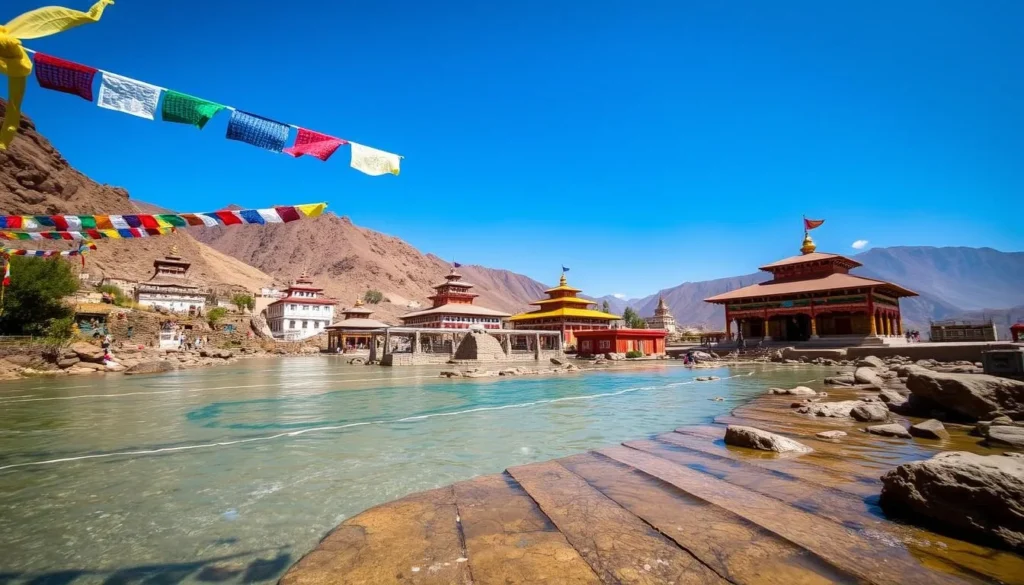
The serene Baghdwar area, with its natural springs and shrines, is a significant cultural and spiritual destination. As you visit this sacred site, you’ll be immersed in a tranquil atmosphere that has been a pilgrimage point for centuries.
Cultural Significance
Baghdwar holds great cultural and religious significance, being the source of the Bagmati River, which is considered sacred in Hinduism. The site is adorned with colorful prayer flags that flutter in the breeze, adding to its vibrant and spiritual ambiance. Devotees visit this place to perform rituals and leave offerings, making it a unique cultural experience.
Natural Springs and Shrines
The natural water springs at Baghdwar are the origin of the Bagmati River. As you explore the area, you’ll notice the clear spring water emerging from the ground, creating a peaceful and serene environment. The site features several small shrines where devotees offer flowers, incense, and red tika powder as part of their religious practices. The water here is considered sacred rather than for practical use, highlighting the site’s spiritual value.
As you visit Baghdwar, you’ll observe the clear spring water and the peaceful atmosphere that has made this a special place of pilgrimage for centuries. The combination of natural beauty and spiritual significance makes Baghdwar a must-visit destination within Shivapuri Nagarjun National Park.
Shivapuri Nagarjun National Park, Nepal: Best Things to Do – Top Picks
With its rich biodiversity and cultural heritage, Shivapuri Nagarjun National Park is a must-visit destination. As you explore the park, you’ll find a variety of activities that cater to different interests, from hiking and wildlife spotting to visiting cultural and religious sites.
Hiking and Trekking Routes
The park offers several hiking and trekking routes that allow you to experience its natural beauty up close. You can hike to Shivapuri Peak, the highest point in the park, or explore the trails that wind through the lush forests. The trails vary in difficulty, ensuring that there’s something for every level of hiker.
Wildlife Spotting
Shivapuri Nagarjun National Park is home to a wide range of wildlife, including various species of birds, mammals, and insects. As you hike through the park, keep an eye out for the diverse fauna that inhabit the area. The park’s conservation efforts have helped to protect and preserve the natural habitats of these species.
Cultural and Religious Sites
The park is not only a haven for nature lovers but also a place of significant cultural and religious importance. You can visit the Nagi Gompa Monastery, a Buddhist monastery that offers insights into the local culture and spiritual practices. Additionally, the Baghdwar area is a sacred site where you can see the source of the Bagmati River. Near the park, you can also visit the Budhanilkantha Temple, home to a majestic reclining Vishnu statue carved from a single block of black stone. This statue is a significant cultural landmark and a testament to Nepal’s rich spiritual heritage.
Some of the top cultural and religious destinations include:
| Site | Description | Significance |
|---|---|---|
| Nagi Gompa Monastery | A Buddhist monastery within the park | Offers insights into Buddhist practices and local culture |
| Baghdwar | The source of the Bagmati River | A sacred site in Hinduism |
| Budhanilkantha Temple | A temple near the park entrance | Home to a significant reclining statue of Vishnu |
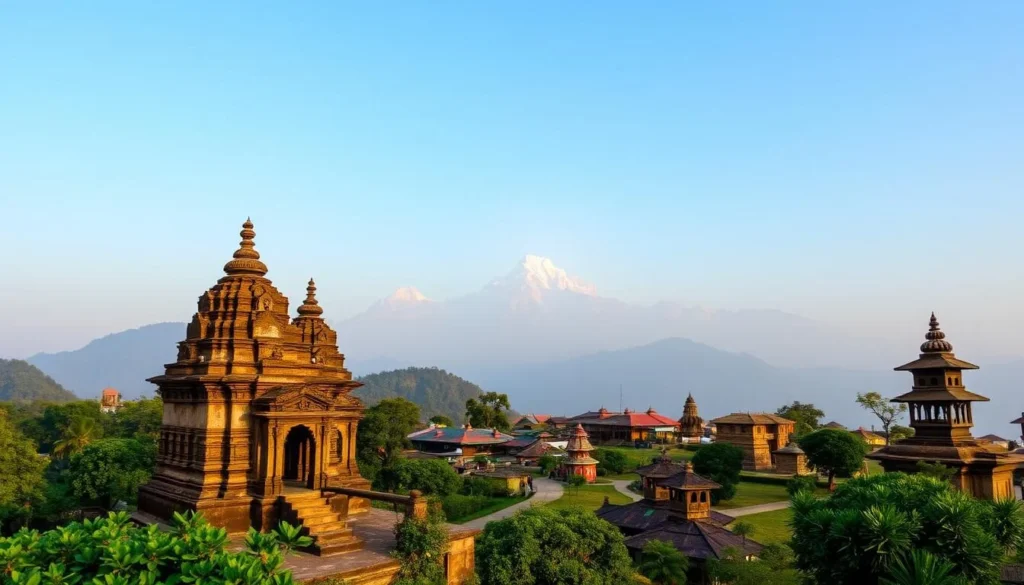
These cultural and religious sites add depth to your hiking experience, connecting you with Nepal’s rich spiritual traditions. Many visitors find that these sites provide meaningful moments of reflection and cultural appreciation during their outdoor adventure.
Extending Your Trek to Chisapani
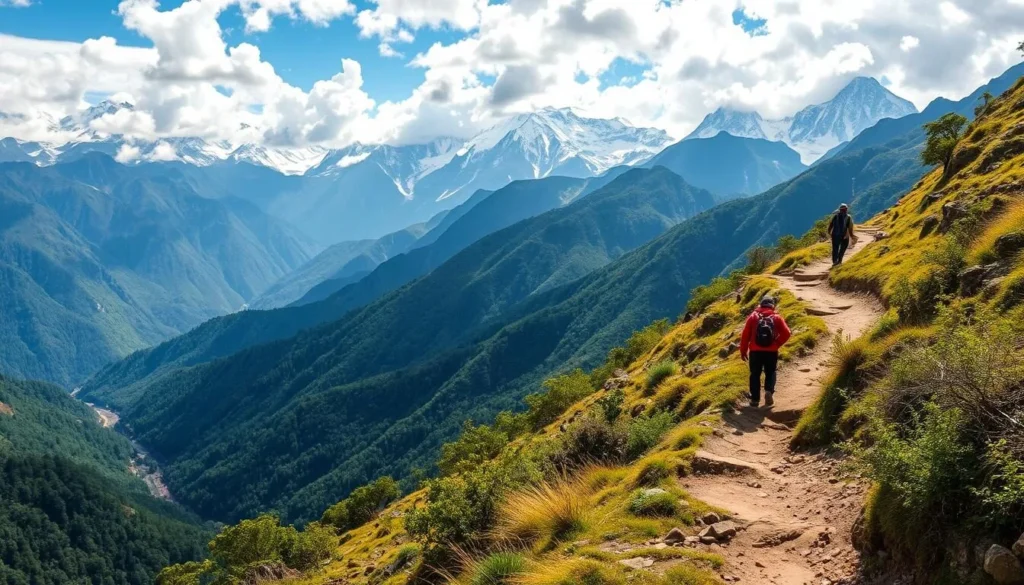
Extending your trek to Chisapani offers a unique opportunity to witness the breathtaking landscapes of Nepal. To fully appreciate the area, plan a trek with an overnight stay in Chisapani. This allows you to experience the changing scenery at different times of the day, adding an extra layer of magic to your adventure.
Trail Details and Difficulty
Trekking permits are required for this region, so it’s essential to check with local authorities before setting off. The trek to Chisapani is known for its scenic views and moderate difficulty level, making it accessible to trekkers with a reasonable level of fitness.
Accommodation in Chisapani
In Chisapani, you’ll find several basic teahouse-style accommodations that offer simple but comfortable rooms for overnight stays. These mountain lodges typically provide shared bathrooms, warm blankets, and hot meals, with prices ranging from $5-15 USD per night depending on the season and standard.
Many guesthouses and small hotel establishments in Chisapani feature rooftop or balcony areas where you can enjoy spectacular sunset and sunrise views over the mountain range. It’s advisable to bring your own sleeping bag liner for hygiene, though most places provide clean bedding.
During peak trekking seasons (October-November and March-April), it’s wise to arrive early in the day to secure accommodation, as these small lodges can fill up quickly with trekkers.
Essential Gear and Preparation
A successful hike in Shivapuri Nagarjun National Park requires careful planning and the right gear. To ensure a enjoyable and safe experience, it’s crucial to be well-prepared.
Recommended Equipment
When preparing for your hike, having the appropriate equipment is vital. You’ll need comfortable hiking shoes, layers for changing weather conditions, and a backpack to carry essentials like water, snacks, and a first-aid kit. Don’t forget to pack sun protection, including a hat, sunglasses, and sunscreen.
Key items to include:
- Comfortable hiking shoes
- Layers for changing weather
- Backpack with essentials (water, snacks, first-aid kit)
- Sun protection (hat, sunglasses, sunscreen)
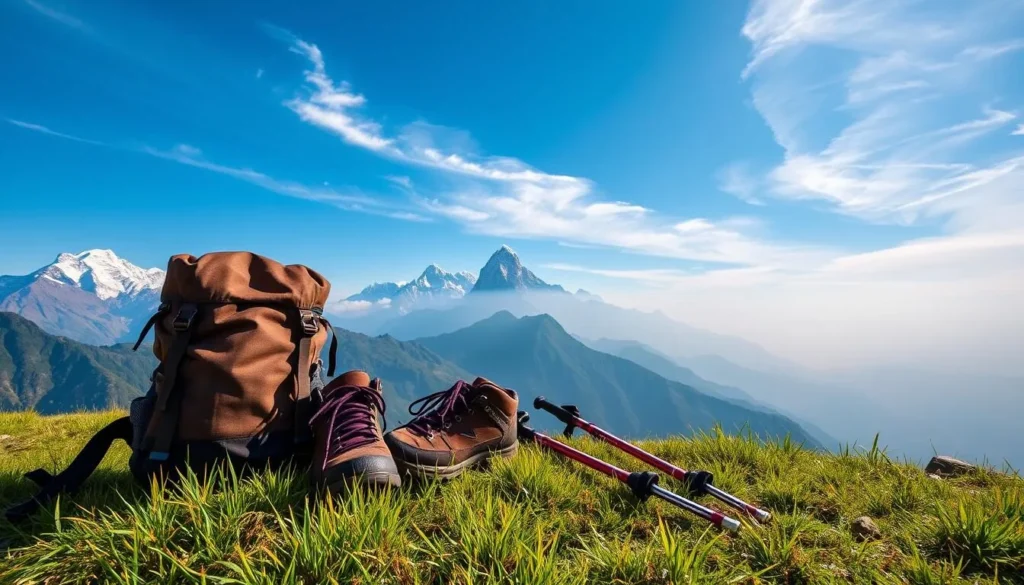
Physical Fitness Requirements
The Shivapuri hike is considered relatively easy but involves numerous stone steps, making it challenging for those not accustomed to hiking or stair climbing. To comfortably complete the hike, which typically takes 6-8 hours round trip, you should have a moderate level of fitness.
Preparing with stair-climbing exercises before your trip can be beneficial. If you’re new to hiking, consider starting a walking regimen several weeks in advance, gradually increasing distance and elevation. Your experience will be more enjoyable if you pace yourself, take regular short breaks, and stay hydrated throughout the journey.
Food and Accommodation Options
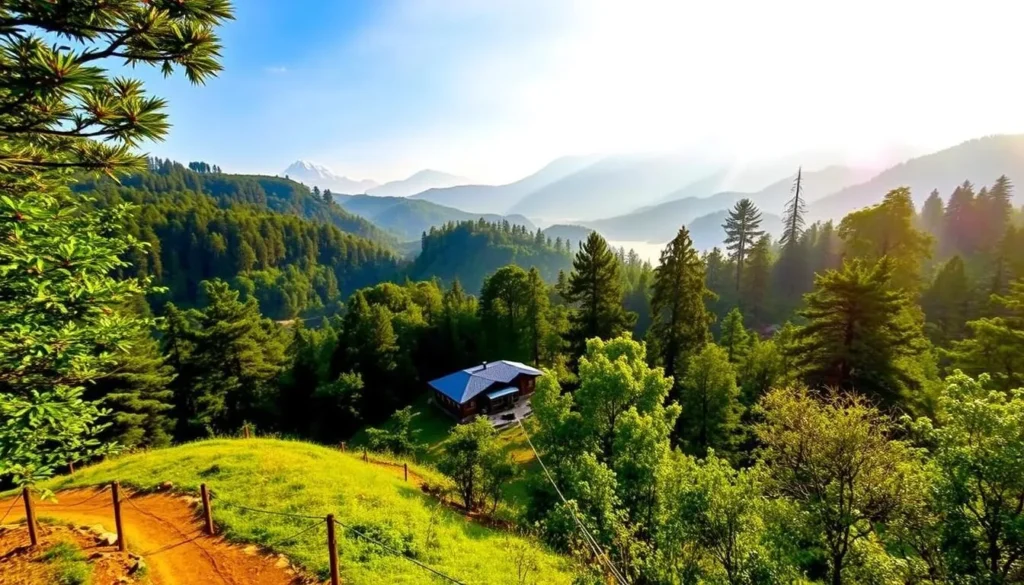
Visitors to Shivapuri Nagarjun National Park need to prepare in advance for their visit, including arranging for food and accommodation. Planning ahead ensures a smooth and enjoyable experience in this beautiful national park.
Where to Stay
For those looking to stay near Shivapuri Nagarjun National Park, there are various accommodation options available outside the park. You can choose from a range of hotels, lodges, and resorts that cater to different budgets and preferences.
Food and Water Considerations
It’s crucial to bring your own food and water for the day as there are no reliable food vendors or restaurants within the park. Pack a substantial lunch, energy-rich snacks like nuts, dried fruits, and chocolate, and at least 2 liters of water per person for the hike. Although Nagi Gompa has a small shop, it’s not consistently open, so it’s best to be self-sufficient.
If you’re concerned about carrying sufficient water, consider bringing a portable water purification system to safely treat water from natural sources along the trail. For those extending their trek to Chisapani, teahouses there serve basic Nepali meals and simple Western options.
Wildlife and Flora in the National Park
The park’s diverse forest types support a vast array of wildlife and plant life across its range of elevations.
As you explore the park, you’ll encounter a variety of ecosystems that are home to numerous native animals.
Diverse Native Animals
The Shivapuri Nagarjun National Park is inhabited by a wide variety of native animals, including several species of mammals, birds, and insects.
- Some of the common animals you might spot include langurs, rhesus macaques, and various bird species.
- The park’s diverse fauna is supported by its rich vegetation and varied habitats within the area.
Variety of Plant Species and Forest Types
The park is comprised of four distinct forest types: lower mixed hardwood, upper hardwood, chirpine, and oak.
| Forest Type | Characteristics | Elevation Range |
|---|---|---|
| Lower Mixed Hardwood | Subtropical vegetation, diverse tree species | Lower elevations |
| Upper Hardwood | Temperate forest species, rhododendron blooms | Middle to upper elevations |
| Chirpine | Pine forests, relatively open canopy | Varied elevations |
| Oak | Dominant oak species, supports rich biodiversity | Upper elevations |
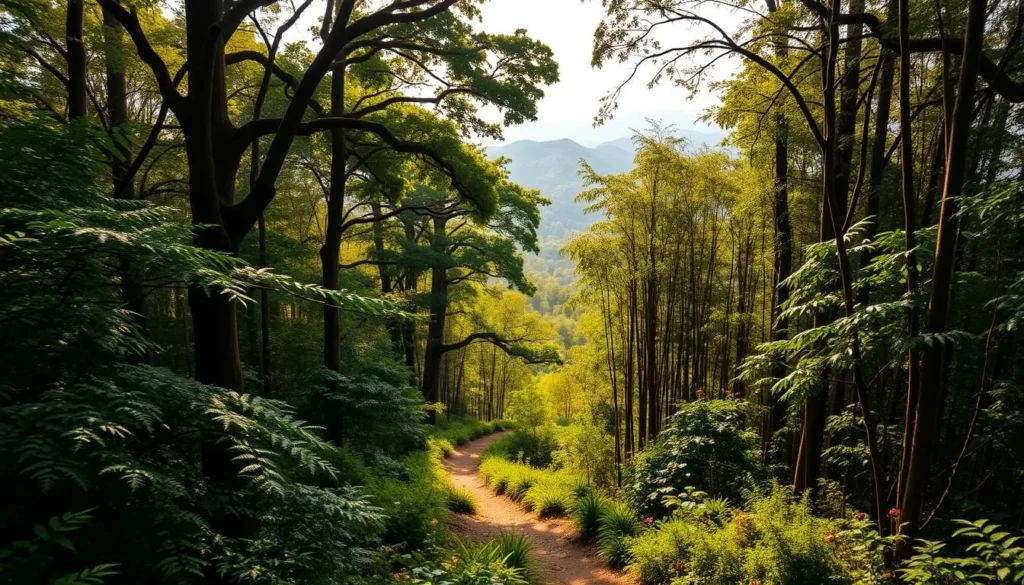
Conclusion
Your visit to Shivapuri Nagarjun National Park is more than just a trip – it’s an opportunity to experience the best of Nepal’s natural and spiritual heritage. As you conclude your journey, you’ll find that this destination offers a unique blend of natural beauty and cultural significance. The park provides a perfect escape from the city, with views of Kathmandu Valley and the Himalayan range that are truly breathtaking.
The park is not just a place for hiking and trekking; it’s also home to diverse wildlife and a crucial water source for the valley below. By visiting with respect and awareness, you contribute to the preservation of this special place for future generations. Your journey through Shivapuri Nagarjun National Park provides a chance to connect with Nepal’s natural heritage and spiritual traditions, making for an unforgettable experience.
In conclusion, Shivapuri Nagarjun is a must-visit destination that offers something for every type of traveler, from peace and tranquility to spectacular natural beauty.
The above is subject to change.
Check back often to TRAVEL.COM for the latest travel tips and deals.
